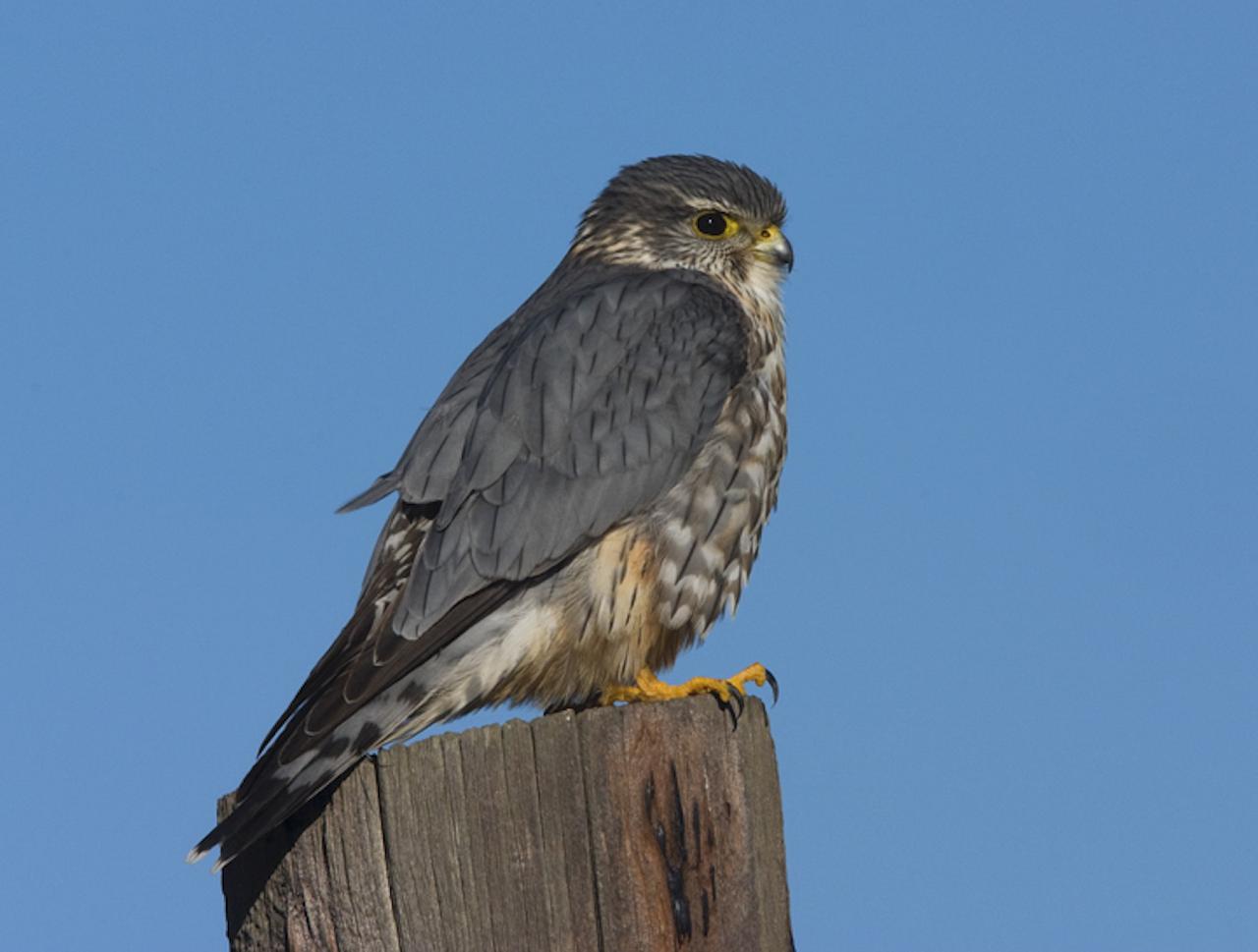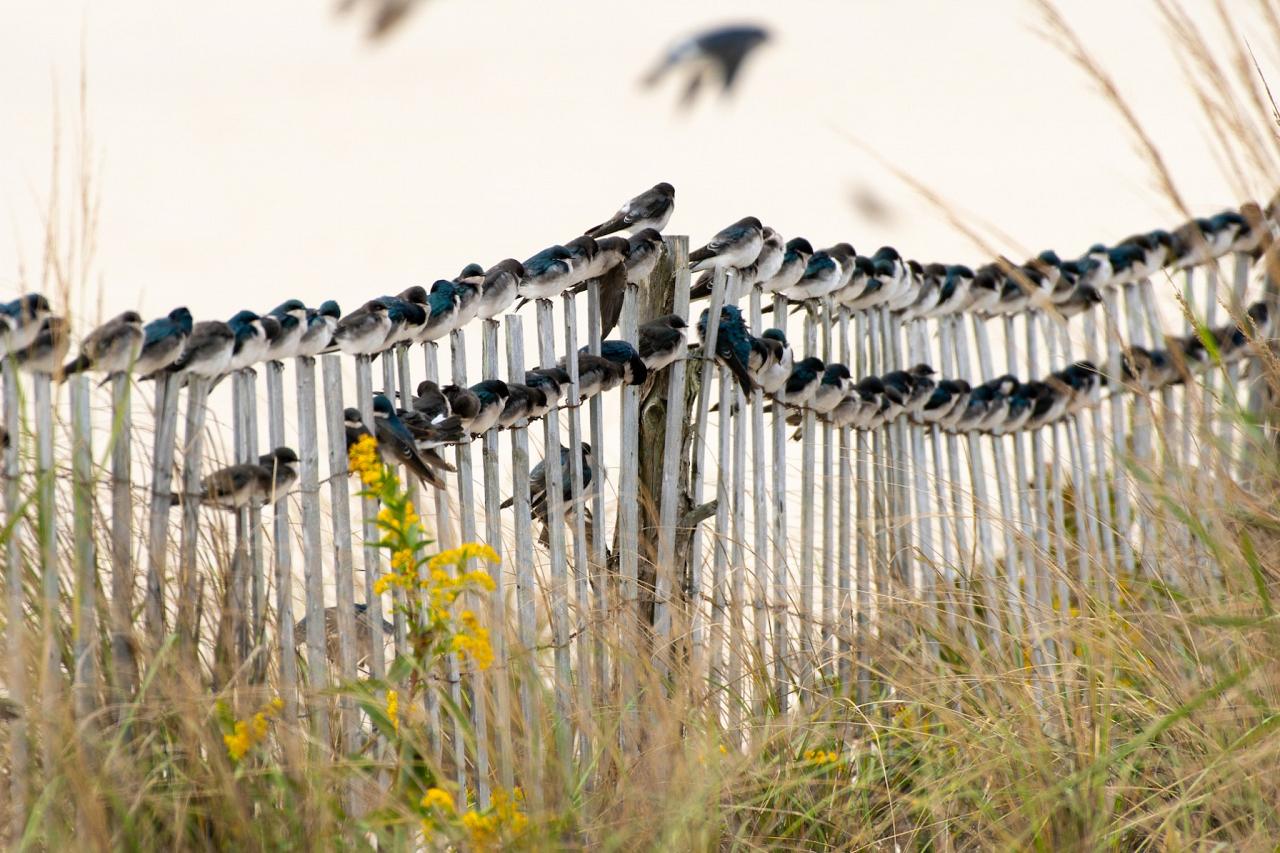- Overview
- Full Itinerary
- Photo Gallery
- Costing
- Travel Details
- Trip Reports
- Guide
- Map
- Know Before You Go
Experience the ultimate fall bird migration at America’s quintessential beach town on this Cape May birding tour. Historic Cape May in October is considered the top birding destination in North America to witness fall migration, especially for birds of prey. Timed for peak land and sea bird diversity and quantity, we visit famous New Jersey birding locations and little-known local patches up and down the coast, including the Cape May Bird Observatory’s nature center and hawk watch platforms and Avalon Sea Watch; tour the world’s largest contiguous salt marsh by boat, cross Delaware Bay to Cape Henlopen State Park, and bird Forsythe National Wildlife Refuge.
Cape May itself is a national historic site and offers incredible examples of Victorian architecture and charm, as well as some of the best seafood on the east coast. Our lodgings for the week are at a classic beachside hotel in historic Cape May. Each morning begins with optional sunrise beach walks in search of shorebirds and beautiful Black Skimmer. Daily trips range from exploring the many examples of tidal salt marshes by boat and van, to visiting one of the most successful beach and dune restorations in the United States.
It’s Cape May’s unique location, situated on a south facing peninsula where the Atlantic seaboard meets the Delaware Bay, that makes it a geographic migrant trap. Birds, both land and sea flyers, sometimes by the thousands, follow the coastline south and find themselves at this peninsula; the perfect spot to stop and fuel up before heading out over the Delaware Bay. Far from the metro areas of northern New Jersey, the Cape May peninsula is home to forests, farmland, wetland meadows, and salt marshes. We catch late migrating eastern warblers and experience the larger songbird migration, which is peaking while we visit. Famous for its Hawk migration too, we spend time at the various hawk watch and counting locations. Large numbers of shorebirds and seabirds are also in migration and they use the vast saltmarsh flats to feed and rest. The Cape May Fall Birding Festival will have just ended before our trip—consider coming in early to participate in a bird walk with a world renowned leader/author or take in an evening presentation.
Please keep in mind that weather, winds, and tides play an important role in the migration along the coast and while we visit all the great birding sites, we may rearrange activities accordingly.
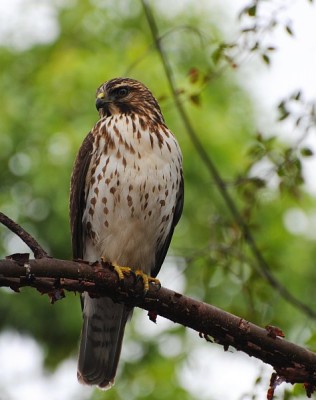
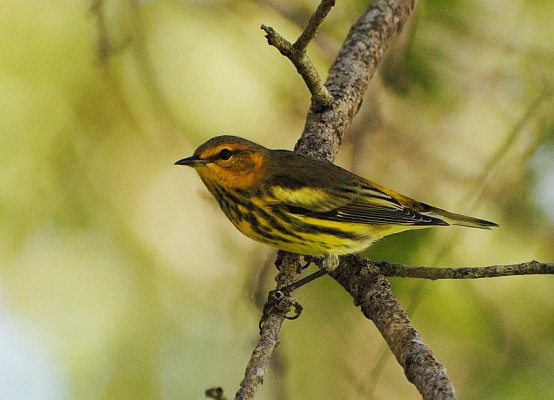
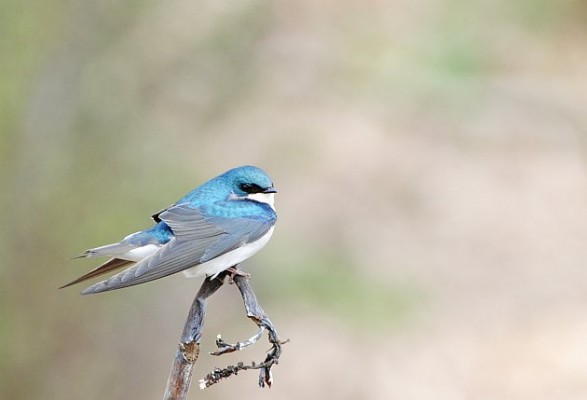
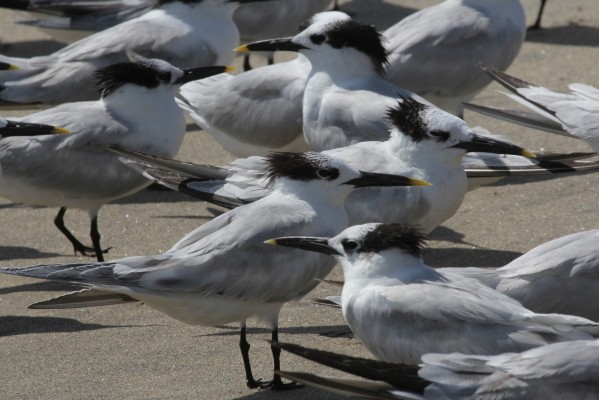
Tour Highlights
- Enjoy a one-stop, unpack, and relaxing tour at a beachside hotel
- Watch for thousands of Sharp-shinned Hawk, hundreds of Northern Harrier, and dozens of Peregrine Falcon and Merlin at the Cape May State Park Hawk Watch Platform
- Spend an afternoon at The Nature Conservancy’s Cape May Bird Refuge, one of the most successful beach habitat restorations on the Atlantic seaboard
- Look for Common, Black, Roseate, Arctic, Gull-billed, and Sandwich Terns at Stone Harbor Point
- Search for elusive Diamondback Terrapin, America’s only saltwater turtle, aboard a salt marsh pontoon cruise
- Visit Avalon Sea Watch, one of the country’s longest-running seabird watch/counting sites and a good spot to see dolphins and whales
- Board Lewes Ferry for a pelagic crossing of the Delaware Bay to the state of Delaware to visit Cape Henlopen State Park and Bombay Hook National Wildlife Refuge
- Watch hundreds, if not thousands, of warblers and other passerines at Morning Flight, a morning watch of returning birds that were pushed out to sea on their evening migration

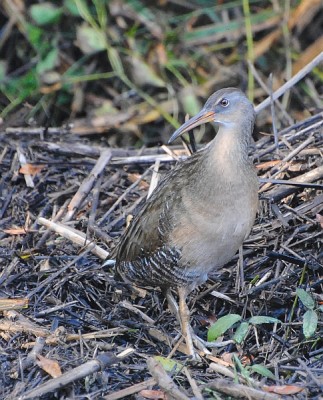

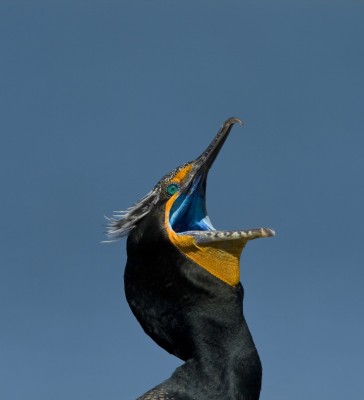
Trip Itinerary
Itineraries are guidelines; variations in itinerary may occur to account for weather, road conditions, closures, etc. and to maximize your experience.

Mon., Oct. 18: Arrivals
Please plan to arrive today at the Philadelphia International Airport (PHL) where we assemble as a group at 2:00 PM at the Continental Airlines baggage claim area. Your guide, Dan Donaldson, is wearing binoculars and meets you there. Then, we load up and travel about 2.5 hours, that includes a quick lunch stop, to our lodgings in Cape May, New Jersey. We take a bit of time to freshen up for dinner and get to know our fellow travelling companions.
Accommodations at the Sea Crest Inn (D)

Tues., Oct. 19: Cape May State Park | Cape May Bird Refuge
We’re off for an early start to Morning Flight today at Higbee Beach, an ongoing morning watch/count of returning birds that were pushed out to sea on their evening migration. This is a chance to see hundreds, if not thousands, of warblers and other passerines making their way back to land. We do this once on the trip as a group and then as an option on any appropriate morning.
Today we get to know Cape May. We stay close to this pretty beach town and familiarize ourselves with the island and the local spots that we visit throughout the week. We start at the Cape May Bird Observatory headquarters and gift shop to orient ourselves, get the local birding news, and pickup any birding necessities. Then we’re off to the Cape May State Park Hawk Watch Platform, nature center, and light house. There, we spend the rest of the morning hawk watching and exploring the state park. A good day on the hawk watch platform can be marked by the passing of 2000 – 3000 Sharp-shinned Hawk, hundreds of Northern Harrier, and dozens of Peregrine Falcon and Merlin. More than 1000 Osprey have been counted on a given day, too! Walking the nearby beach can produce sightings of Parasitic Jaeger, all three scoters, loons, and many species of gull. Walks around the park can push up nearly any late migrating eastern passerine this time of year, too. Lunch is at one of our favorite cafes.
This afternoon we explore Cape May Bird Refuge, aka “the Meadows.” Owned and managed by The Nature Conservancy, this important coastal birding area is one of the most successful habitat restorations on the Atlantic seaboard. Fall migration at the Meadows is nothing short of spectacular. It’s famous for evening Merlin and Peregrine flights as they work the meadows to catch that last dragonfly snack before settling in for the evening. Many of the hawks counted at the Cape May Hawk Watch pass directly over the Meadows or hunt in it. Peregrine, Cooper's Hawk, and Merlin can put on a spectacular show from mid-September through late October, along with scads of Northern Harrier, Sharp-shinned Hawk, and even the occasional Bald Eagle circling overhead. Beach areas can offer a good selection of shorebirds often sitting inland to get out of the wind.
We end today, and many of our days, at Sunset Beach to watch “flyout” of terns and scoters that prefer to sleep on the deeper waters of the Atlantic.
Accommodations at the Sea Crest Inn (B,L,D)
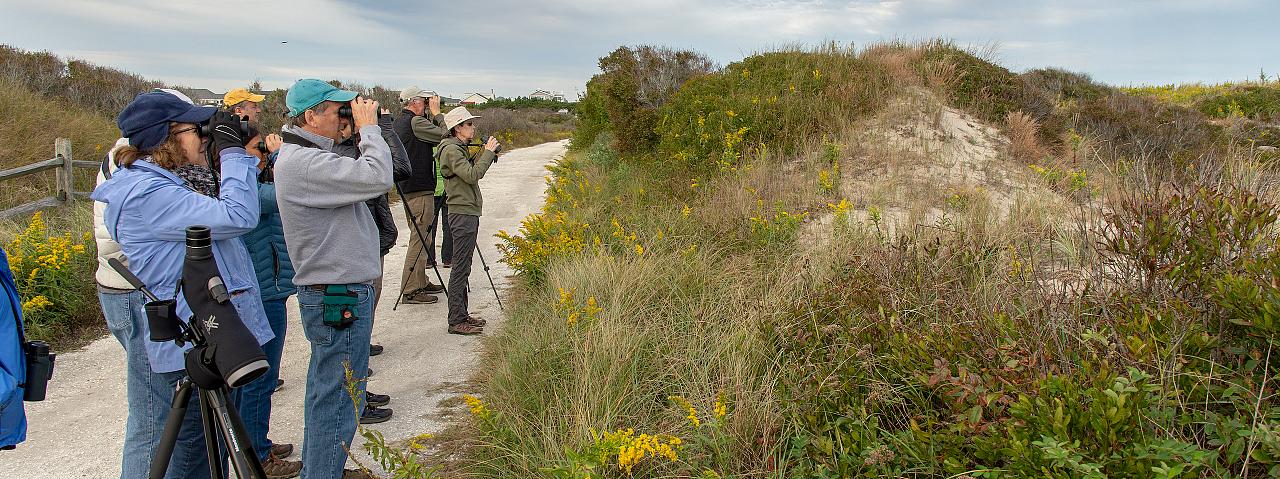
Wed., Oct. 20: Stone Harbor Point | Salt Marsh Boat Tour | Nummy Island
This morning, and every morning for the remainder of the trip, those who wish can enjoy an optional sunrise (6:30 AM) beach walk before breakfast at the hotel (typically each day at 8:00 AM). After breakfast we head to Stone Harbor Point where many of the shorebirds and waterfowl in the area can be found. Common, Black, Arctic, Gull-billed, Sandwich, Roseate, and Royal Terns are all possible. Monarch butterflies are common in the brush, as are migrant songbirds.
After a local lunch we head to Miss Chris Marina where we board the Osprey, a large pontoon tour boat, to explore the salt marshes along New Jersey’s Intracoastal Waterway. Here we have a chance to see many shorebirds and migrating waterfowl that utilize the sea grass islands and constantly changing tidal creek mudflats of the saltmarsh. We watch for the elusive Diamondback Terrapin, North America’s only saltwater turtle.
After lunch we’re off to further explore the salt marshes as we drive the intracoastal areas with stops at Nummy Island, famous for nesting Black-crowned Night-Heron; watch for flyby terns of various species and search for the ever-present Clapper Rail. Here we also stop at a local patch where Nelson’s, Saltmarsh, and Seaside Sparrows frequent. Tides may require that we rearrange the activities today. We catch the sunset at Sunset Beach again back in Cape May and then return to our hotel to freshen up before dinner at a local restaurant.
Accommodations at the Sea Crest Inn (B,L,D)

Thurs., Oct. 21: Delaware | Cape Henlopen State Park | Prime Hook NWR
Delaware is the smart little brother to Cape May. Best known for its spring migration of Red Knots and Horseshoe Crabs, Delaware offers fantastic birding opportunities and diverse habitats. It could have been the birding destination on the east coast if it weren’t for its big brother, New Jersey.
We board the early Lewes Ferry for a pelagic-birding ferry crossing of the bay to the state of Delaware. This ferry trip can be very productive for sea birds and scoters that either spend the night afloat or fly in at sunrise to feed. Once in Delaware we spend the day exploring the pine barren habitats of Cape Henlopen State Park. We have lunch in the Historic District of Downtown Lewes and spend the remainder of our afternoon at Prime Hook NWR, local hawk watch sites, and other fall birding hotspots on the Delaware side of the bay. Our late afternoon departure gives us the opportunity catch the “fly out” of birds that visit bay areas during the day. This being a bit of a long day, we have traditionally made this our pizza party dinner at the hotel so we can turn in a bit earlier.
Accommodations at the Sea Crest Inn (B,L,D)
Fri., Oct. 22: Forsythe NWR | Avalon Sea Watch | Wetlands Institute
We bird our way through the vast salt marsh areas north of Cape May today as we make our way up the coast to Edwin B. Forsythe National Wildlife Refuge (aka Brigantine), a 43,000-acre natural area with both fresh and saltwater marshes. Here we have great opportunities to see Clapper and King Rails, bitterns, migrating shorebirds and waterfowl, as well as Peregrine Falcon hunting the marshes. All the East Coast waterfowl and wading birds can be found here, and Brant and Snow Geese should be just arriving. Watch as Peregrine and Merlin push around shorebirds that take flight in flashing waves of motion. Osprey are common and we may even tire of seeing them! There are thousands of acres of both fresh and salt marshes here and almost any East Coast water bird is possible.
On the way back to Cape May we stop at the Avalon Sea Watch, one of the country’s longest-running seabird watch/counting sites. Birds we likely see here include: Double-crested Cormorant (200,000 per year), Red-throated Loon (50,000 per year), scoters (100,000 – 200,000 annually, mostly Black and Surf), Northern Gannet (50,000 per year), and uncountable numbers of gulls. Here, a good day for scoters can amount to a count of 20,000 birds! There is also a steady flow of Common Loon, terns of various species, Green-winged Teal, Long-tailed Duck, Bufflehead, Black Duck, scaup, and many other species. New Jersey Audubon counters are here to help with identification and information.
Accommodations at the Sea Crest Inn (B,L,D)

Sat., Oct. 23: Guide's Choice
After the chance to stroll the beach this morning (we likely visit Higbee Beach again for the Morning Flight) and an enjoyable breakfast, we set out to explore once last time. Today we play it by ear, based on weather conditions and reports of good bird activity. We make time to revisit some of our favorite locations from past days, or any locations we may have missed due to weather or other conditions during the week.
We make time for a nice lunch and dinner tonight is at the famous Lobster House restaurant where we finish our bird lists and reflect on the week.
Accommodations at the Sea Crest Inn (B,L,D)
Sun., Oct. 24: Departures
After an early breakfast, we depart for the Philadelphia airport, where we should arrive by 11:00 AM. (B)
Cost of the Journey
The cost of this journey is $2490 DBL / $2990 SGL, from Philadelphia. Cost is based on double occupancy and includes all accommodations, meals specified in the itinerary, group airport transfers, professional guide services, local park and other area entrance fees, and miscellaneous program expenses. Cost is based on a minimum number of 8 participants; with fewer a small group surcharge (typically $100 – $300) may apply. Cost does not include transportation to or from your home to Philadelphia or items of a personal nature such as laundry, telephone charges, porterage, maid gratuities, or beverages from the bar.
Travel Details
Please plan to make air travel plans only after the minimum group size has been met. We will send you a confirmation email as soon as the trip has been confirmed.
Please arrive at Philadelphia International Airport (PHL) no later than 2:00 PM on October 18, and plan to depart after 1:00 PM on October 24. If you arrive early or stay on after the trip in Philadelphia, there are a number of motels close to the airport. If you plan to drive, please meet the group at the hotel by about 3:00 PM. Parking is available.
Items of Note
Pace of the Journey
This is a relaxed journey with minimal early mornings. Most locations are just minutes from our hotel and while we spend full days in the field, there are ample opportunities for breaks or an afternoon off on your own. Most birding locations are short walks on flat ground, easy on the exertion level.
Browse below for trip reports and species lists from past versions of this and other tours from this destination.
New Jersey
- October 2017
- October 2018
Cape May
- October 2014
- October 2017
- October 2018
- October 2021
- October 2021
- May 2022
- October 2022
- May 2023
- October 2023
- May 2024
- October 2024
-
James P. Smith

James brings some twenty five years of guiding experience to Naturalist Journeys. Originally from Sheffield in the United Kingdom, he discovered a love for guiding in Israel in 1995 where he helped establish the Kibbutz Lotan Center for Birdwatching in the Southern Arava Valley. Since then, he’s led hundreds of tours throughout the Northern Hemisphere for a number of UK-based tour companies. His trips to Israel and North America are especially close to his heart but he’s also led or co-led tours to Mexico (Veracruz), The Gambia, Kenya, Iceland, Scottish Highlands, Spanish Pyrenees, Central/Southern France, Greece (Lesvos), and India (Goa). An accomplished illustrator, James placed runner-up in the British Birds “Bird Illustrator of the Year” competition in 1992 and went on to have his work published in numerous birding magazines and journals. He also co-authored the two volume set A Guide to the Birding Hotspots of Israel (Published in 2000 by the Israel Ornithological Center and the S.P.N.I.). He returns to Israel every year to lead trips and remains an active member of the Israel Rarities and Distribution Committee. When not leading tours he can be found at home in Western Massachusetts with his wife Susannah and their young son Matan.
Other trips with James P. Smith
-
 Cape May: Spring Migration FULL - See our fall departures!May 13 - 19, 2025
Cape May: Spring Migration FULL - See our fall departures!May 13 - 19, 2025 -
 Summer in Costa RicaJuly 10 - 17, 2025
Summer in Costa RicaJuly 10 - 17, 2025 -
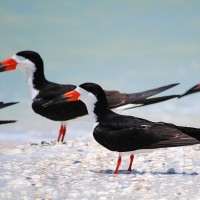 Cape May: Fall MigrationOctober 14 - 20, 2025
Cape May: Fall MigrationOctober 14 - 20, 2025 -
 Belize: Three Great LodgesNovember 2 - 12, 2025
Belize: Three Great LodgesNovember 2 - 12, 2025
-
Essential Information +
Photo credits: Banner: Cape May Birders at Dawn, Dan Donaldson; Northern Pintails, Sandy Sorkin; Cape May Sunset, Richard Becker; Northern Shoveler and Friend, Sandy Sorkin; Black Black Skimmers by Carlos Sanchez; Broad-winged Hawk, Carlos Sanchez; Cape May Warbler, Carlos Sanchez; Tree Swallow, Carlos Sanchez; Sandwich Terns, Naturalist Journeys Stock; Clapper Rail, Carlos Sanchez; Red-throated Loon, Greg Smith; Double-crested Cormorant, Greg Smith; Group Photos in Day to Day itinerary by Hugh Simmons Photography; Northern Harrier by Greg Smith; Merlin by Greg Smith; Great Egret by Sandy Sorkin; Tree Swallows by Hugh Simmons Photography; Clapper Rail by Carlos Sanchez.







